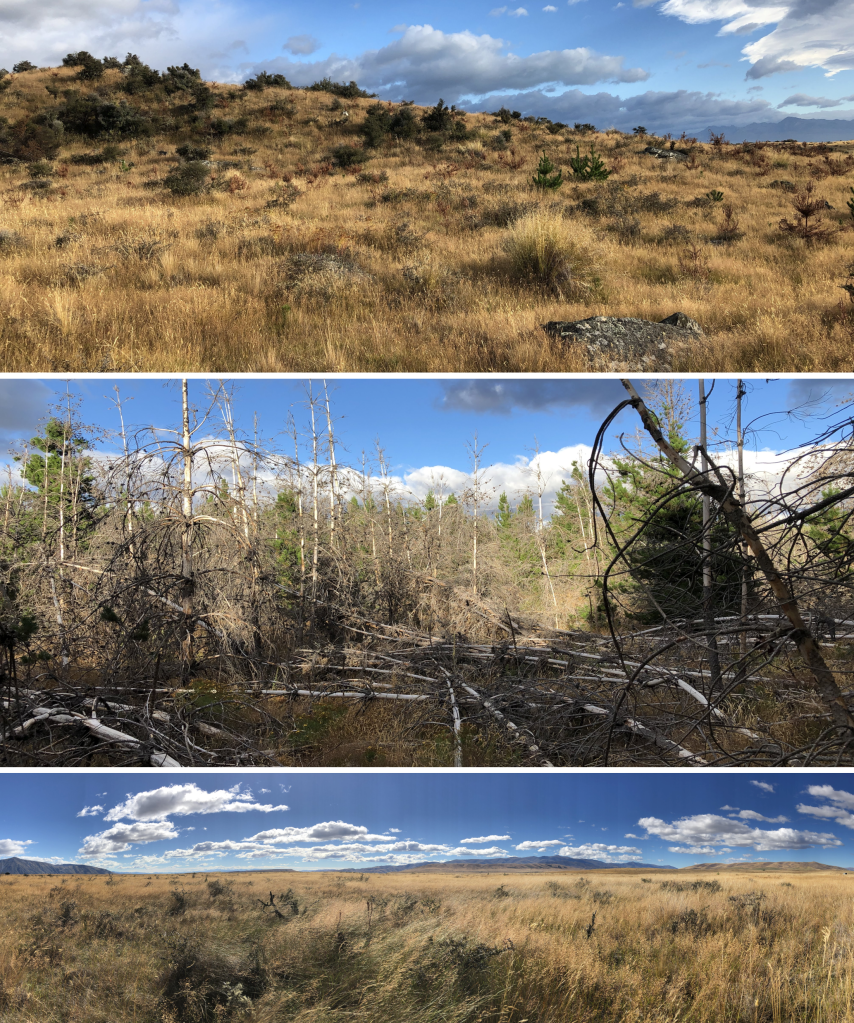
Sarah Sapsford discusses her recent article: Slow soil enzyme recovery following invasive tree removal linked to bacterial and fungal communities.
🌲 The tree invasion problem
Pine trees have been planted around the world for their fast growing and useful timber. But sometimes these trees can become highly invasive – and when they do, they may change ecosystems forever. Pine invasions alter soil nutrient cycling, reduce water availability and lead to dramatic declines in diversity of other organisms, including plants and fungi. Unfortunately, even after the removal of pines from an area, the effects of invasive pines remain as “legacies”, particularly in soil. Legacies can be difficult to reverse and can make restoration difficult or even impossible.
In New Zealand, millions of dollars are spent annually to remove wilding pines, but legacies have rarely been considered. This may result in a failure of control, where invasive pines are removed only to be replaced by other weed species – or even simply to revert back to pine. Therefore, we set out to better understand the legacies of pine and how long these legacies might persist.
🔎 How did we measure recovery?
We selected 22 pine-removal sites across a gradient of initial pine density, ranging from sparse (Figure 1: top) to dense (Figure 1: middle), and where removal had taken place from 1 to 13 years previously (Figure 1: bottom). At each site, we measured soil pH, nitrogen and phosphorus, and extracted DNA to determine the species of fungi and bacteria present in the soils. We also measured the activities of soil enzymes involved in carbon, nitrogen and phosphorus nutrient cycling. We used these data to test the impact of pine (as density) and the recovery of ecosystems after pine removal (as time since removal).

⭐️ The slow gradual recovery of ecosystems may need some help
We determined that legacies of pine persist in the soil for quite a few years after pine removal. Specifically, fungal species that are closely associated with pines, and are necessary for pines to establish in an area, can remain in the soil for at least 5 years after removal. It is possible these fungal species may be persisting on scattered reinvading pine seedling or trees that were not completely killed during removal. The persistence of these pine-associated fungi may allow future reinvasion.
Pine invasions cause elevated levels of phosphorus, and our results suggest that these levels persist after pine removal. Soil phosphorus did not change over time and was greater at high densities of removal in comparison to low densities of removal. This elevated phosphorus may contribute to the invasion of a range of other invasive plants, which is frequently observed after pine invasion.
Not all is lost! Overall changes in soil fungal and bacterial communities, driven by pine removal, changed soil enzymatic activity. However, these changes in communities and enzyme activity were influenced by time since removal which suggests gradual ecosystem recovery.
Given persistence of some pine legacies, removal of pines alone may not result in ecosystem restoration. Rather, removal of pines at low density, at early stages of an invasion, may prevent larger impacts we observe when an invasion is more established (e.g., high densities). Given enough time, and removal at low densities, ecosystems may begin to recover. Active restoration through planting of native species in combination with active management of weed species may also speed recovery of these ecosystems.

Sarah Sapsford, University of Canterbury, New Zealand.
Read the full article online: Slow soil enzyme recovery following invasive tree removal linked to bacterial and fungal communities.
